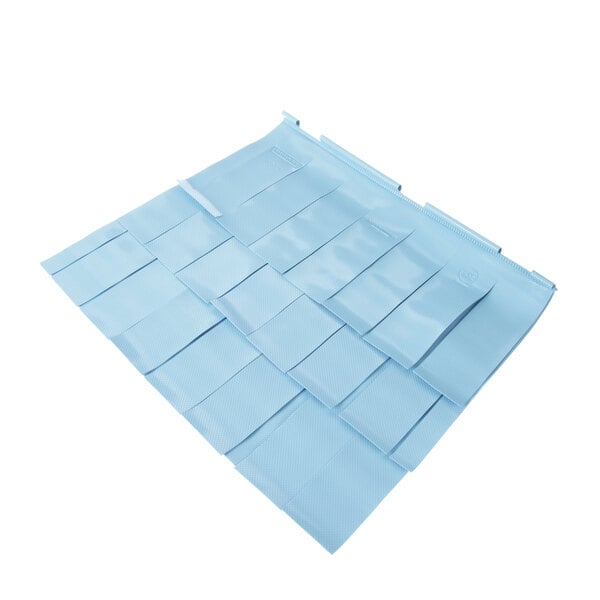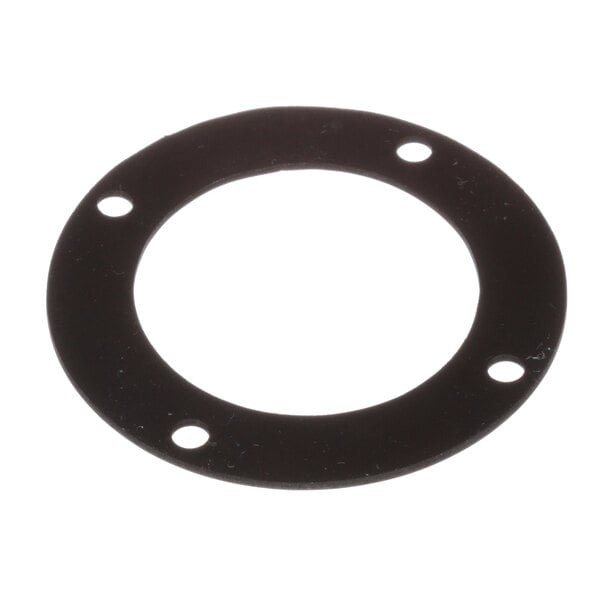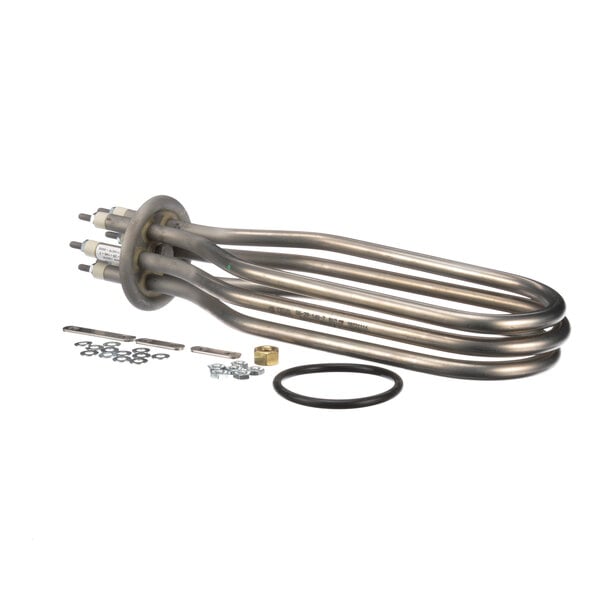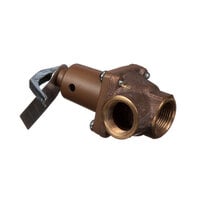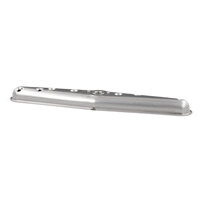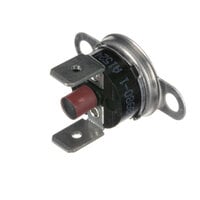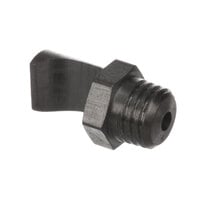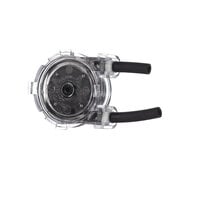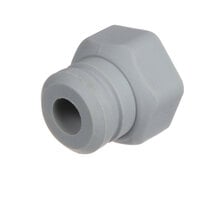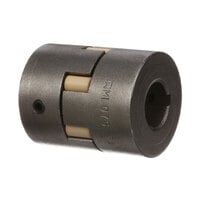
Hobart Dishwasher Troubleshooting Guide
A dishwasher malfunction is always bad news for your restaurant. Without clean dishes, you can't plate food, fill drink orders, or even prep food properly. The alternative is to switch over to handwashing in a three-compartment sink, which is just as effective when done properly, but takes much longer. During a busy shift, this will slow down operations and compromise your service. Thankfully, many dishwasher issues can be fixed without a service call. Use this guide with its handy tips to complete some simple Hobart commercial dishwasher troubleshooting.
Shop Hobart Dishwasher Parts
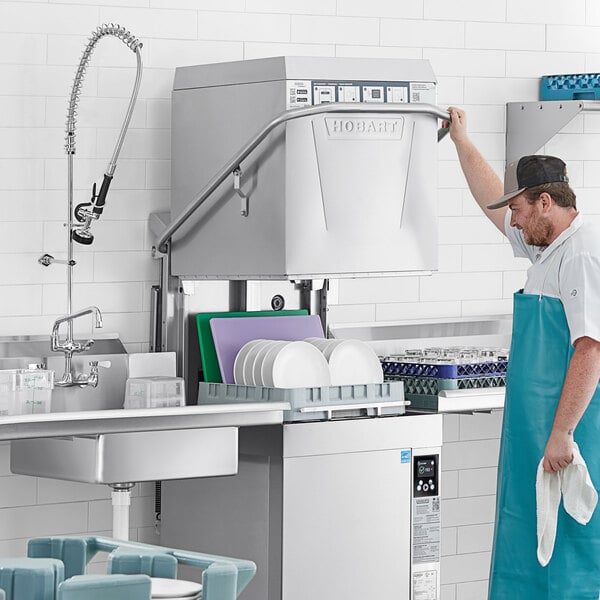
If your Hobart dishwasher isn't turning on, it can be a frustrating situation, especially in a busy commercial kitchen where efficiency is key. Before calling a technician, there are some troubleshooting steps you can try yourself to potentially resolve the issue.
- Check Power Supply: First things first, confirm that your dishwasher is securely plugged into a power outlet. If it is, check if the outlet is working by plugging in another device. If the outlet is functioning properly, move on to the next step.
- Inspect Circuit Breaker: Head over to your circuit breaker panel and check if the breaker for your dishwasher is in the "on" position. If it's tripped, reset it and try turning on your dishwasher again.
- Check Door Latch: Double-check that the door of the dishwasher is closed and latched properly. If the door is not fully closed, the machine will not start. Remove any obstructions that are preventing the door from closing completely.
- Check Timer: The timer on a Hobart dishwasher regulates the cycles of the machine. You may encounter a situation where the timer has timed out. Simply press the START button or insert a rack to get the cycle going again.
- Energy Saver Mode: When the dishwasher detects that it has been idle for an extended period while in energy saver mode, it may automatically shut down to conserve energy. If this is the case, all you need to do is press the STOP button to resume normal operation and get your dishes cleaned efficiently.
- Examine Control Panel: Examine the control panel of the dishwasher for any error codes or flashing lights. Skip to our error code section or refer to the manufacturer's manual for guidance on interpreting these indicators and troubleshooting accordingly.
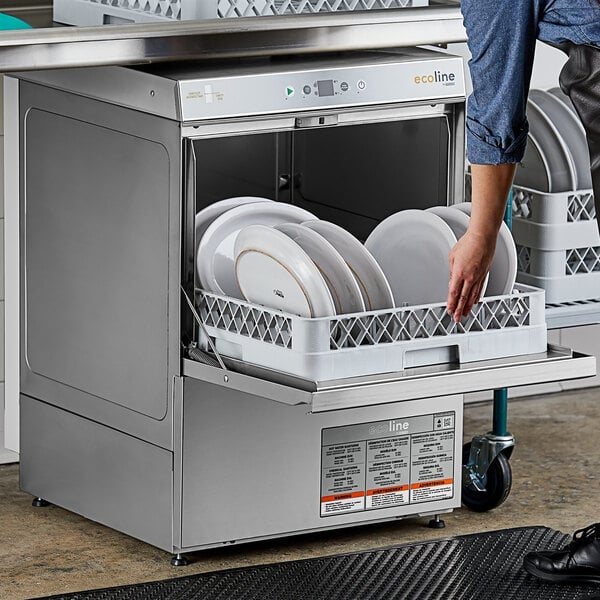
By troubleshooting these common issues, you may be able to resolve the problem with your Hobart dishwasher not filling or filling slowly before seeking professional service.
- Adjust the Leveling: First, check if your dishwasher is sitting level on the floor. An unleveled machine can cause water to not fill properly. Adjust the leveling feet so the machine is stable and even.
- Check Door Latch: Make sure the dishwasher door is fully closed during operation. An open door can disrupt the filling process and prevent water from entering the machine.
- Water Supply Valve: Check the water supply valve connected to the dishwasher. If it is closed, the dishwasher won't receive water. Ensure the valve is fully open to allow water to flow into the machine.
- Water Pressure: Low or no water pressure can also be a culprit for slow filling. Verify that the water pressure in your establishment is adequate for the dishwasher to function properly.
- Clean the Strainer: Inspect the dishwasher's strainer for any debris or buildup that may be blocking the water flow. A dirty strainer can impede the filling process and lead to issues with water intake.
- Check the Standpipes: Standpipes are vertical pipes that help regulate the water level inside the dishwasher. If these standpipes are not in the correct position, they can restrict water flow and lead to issues with the washing cycle.
- Close the Drain Valve: Check if the drain valve on the dishwasher is open. An open drain valve can lead to water draining out of the machine instead of filling up.
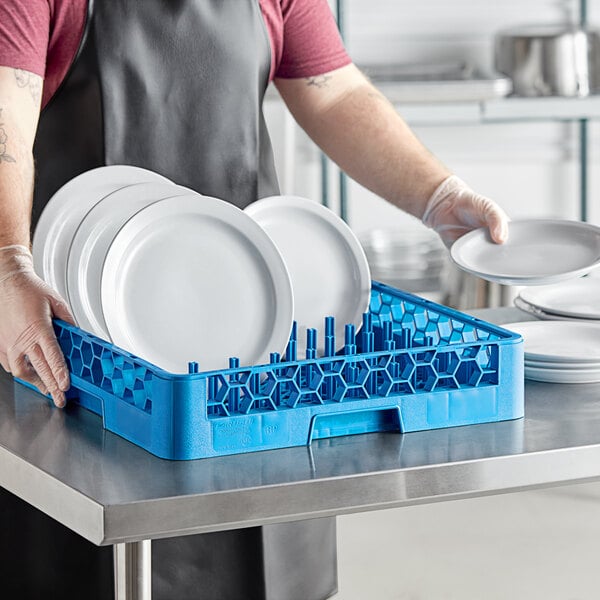
If you start to see unclean dishes coming out of your Hobart dishwasher, it's time to take a look at some key components. By following these troubleshooting steps, you can address common issues that may be causing your Hobart dishwasher to not clean dishes properly.
- Check for Clogged Strainers: Start by inspecting the strainers in the dishwasher. If they are clogged with food particles or debris, it can hinder the cleaning process. Clean the strainers thoroughly to allow for proper water flow.
- Inspect the Water: If the water in the dishwasher looks dirty or cloudy, it could be affecting the cleaning performance. Confirm that the water is clean and clear before running the dishwasher cycle.
- Unclog Wash or Rinse Arms: The wash and rinse arms play a crucial role in distributing water and detergent evenly. If these arms are clogged with debris, they won't be able to clean effectively. Clean out any blockages to keep water flowing.
- Check Wash or Rinse Arms Rotation: The wash and rinse arms should be turning during the wash cycle. If they are not rotating, it can result in uneven cleaning. Check for any obstructions that may be preventing the arms from moving freely.
- Clean Chemical Dispensers: If the chemical dispensers are clogged or not dispensing the right amount of detergent, it can impact the cleaning performance. Inspect and clean the dispensers if necessary.
- Prep Dishes Properly: If dishes weren't scraped well enough before loading them into the dishwasher, leftover food particles can interfere with the cleaning process. Properly scrape and rinse dishes before placing them in the dishwasher.
- Load Racks Correctly: Improperly loaded racks can obstruct water flow and prevent dishes from getting clean. Make sure the dishwasher is loaded properly to allow for optimal water circulation.
- Check Water Temperature: Water temperature plays a crucial role in cleaning dishes effectively. If the water temperature is too low, it may not be able to remove grease and food residue efficiently. Ensure that the water temperature is set to the recommended level for your dishwasher model.
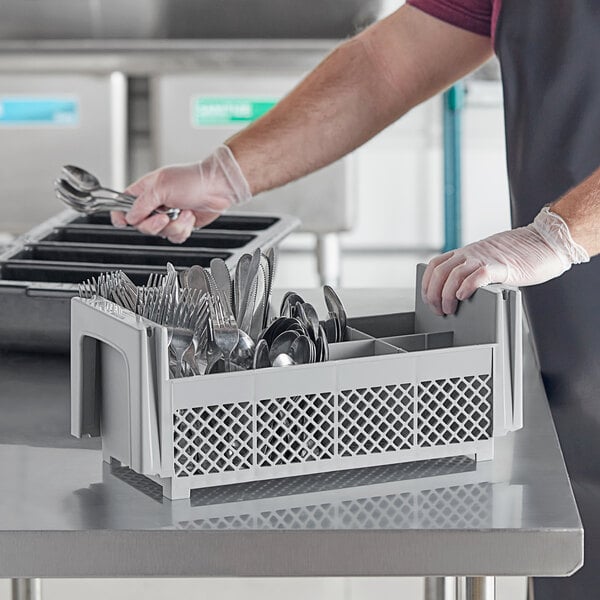
Seeing spots on glassware and flatware after running them through the dishwasher can be frustrating. Not only do they look unappealing, but they can also leave a bad impression on your customers. Try these troubleshooting steps to fix this common issue:
- Incorrect Final Rinse Temperatures: Check the final rinse temperature of your dishwasher. If the temperature is too low, it may not be effectively rinsing off all the detergent, leading to spots on your dishes.
- Low Water Pressure: Insufficient water pressure can impact the cleaning ability of your dishwasher. Make sure that the water pressure is at the recommended level for your Hobart dishwasher model.
- Water Hardness: Hard water can leave mineral deposits on your dishes, causing spots. Consider using a water softener or adjusting the settings on your dishwasher to accommodate for water hardness.
- Incorrect Chemical Types for Water Hardness: Using the wrong type of detergent for your water hardness level can also result in spots on dishes. Always use a detergent that is designed for your water conditions.
- Problem with Rinse Aid Dispenser: A malfunctioning rinse aid dispenser can lead to spots on dishes. Check the dispenser to ensure it is working properly and dispensing the right amount of rinse aid.
- Low Water Level: If the water level in your dishwasher is too low, it may not be able to properly rinse off detergent, resulting in spots on dishes. Check the water level and make any necessary adjustments.
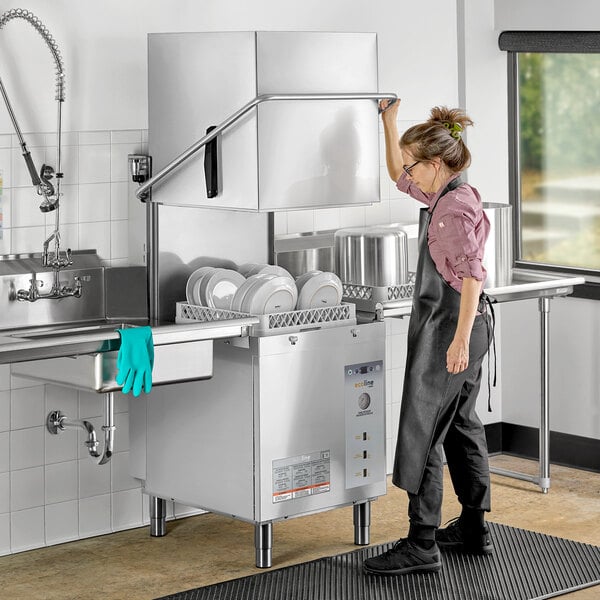
A dishwasher that doesn't heat the water can lead to ineffective cleaning and sanitizing, causing delays in your kitchen operations. Let's walk through some troubleshooting steps you can take to get your dishwasher back up and running in no time.
- Power Supply: First, check the power supply to ensure that the dishwasher is receiving adequate power. Verify the power switch is turned on and that there are no tripped circuit breakers or blown fuses.
- Check Water Heater Element: Inspect the water heater element for any signs of damage or corrosion. A faulty or damaged element can prevent the water from heating up properly. If you notice any issues with the element, it may need to be replaced.
- Thermostat: Confirm that the thermostat setting on the dishwasher is set to the appropriate temperature for effective heating. If the thermostat is incorrectly set, adjust it accordingly.
- Inspect the Heat Float: The heat float is a safety feature that regulates the water temperature inside the dishwasher. If it becomes blocked or stuck, it can prevent the water heater from functioning properly. Clean the heat float and ensure that it moves freely.
- Clogged Water Inlet: Another potential cause of a water heater not heating up could be a clogged or blocked water inlet valve. Check the valve for any obstructions and clean it if necessary to allow proper water flow.

Most issues that cause damage to your dishware and glassware can be remedied with some simple adjustments. Follow these troubleshooting steps to prevent damage to your dishes:
- Etching: Etching occurs when the surface of the dish is worn away, leading to a dull and scratched appearance. If you see etching on your dishware, check the water temperature and detergent levels. Adjust the rinse aid settings to prevent mineral deposits from forming on your dishes.
- Tarnishing: Silver-plated or sterling silver flatware is particularly susceptible to tarnishing in the dishwasher. The high heat and harsh detergents used in some dishwashers can cause the silver to oxidize, leading to a tarnished appearance. Handwash these items for the best results.
- Pitting: Pitting is the formation of small impressions on the surface of dishes, glassware, or flatware. This can happen when the surface of the items comes into contact with harsh chemicals, abrasive detergents, or excessive heat during the dishwashing cycle. Over time, these factors can cause the material of the dishes to deteriorate, leading to the formation of pits. Double-check your temperature settings and make sure you use the correct detergents and rinse aids.
- Brown stains: You may have high iron content in the water supply. Test your water and correct if needed. Clean the dishwasher interior, including the spray arms and filters, to remove any built-up residue. Run a cleaning cycle with a dishwasher cleaner to eliminate any lingering stains.
- Chipping: Inspect the dish racks for any sharp edges or damaged areas that may be causing chipping. Avoid overloading the dishwasher to prevent dishes from bumping into each other during the wash cycle.
- Fading of china patterns: Use gentle detergent specifically designed for delicate china to prevent pattern fading. Hand wash china with intricate patterns or decals to preserve their appearance.
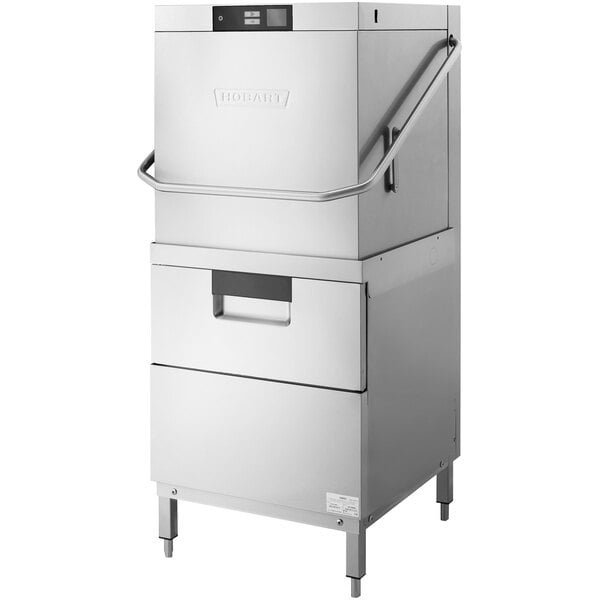
These are some common Hobart dishwasher error codes and their meanings:
- Door(s) Open: A door is open and is preventing operation. Check all inspection doors and main doors.
- Unload Dishes: There is a rack resting on the table limit switch at the clean dish side. Remove the racks of clean dishes to resume operation.
- Clear Conveyor Jam: Something is blocking the operation of the conveyor in your conveyor-type machine. Clear any conveyor jams, remove the rack, press START, and rerun the rack.
- Probe Err - [Tank Name]: One of the sensors in the tank is not reading. Double-check that the float assembly is undamaged and there is sufficient water in the tank to cover the float.
- Fnl Rinse Temp Low: Your unit's final rinse temperature didn't reach the required temperature, so your dishes may not be properly sanitized. Make sure to properly sanitize dishes before using them again.
- Probe Error - FnlRns: The sensors in your unit detected an issue with the water supply during the final rinse. Ensure that the supply valve to the booster heater is open.
- Check Water Level: Your machine is sensing low water levels. Check to make sure the drain is closed and free of debris. Make sure the water supply valve is open. If tanks fail to fill within 20 minutes of closing inspection doors, call for service.
- Reset Required: Your dish machine requires a reset. Place it in standby mode, then wait 60 seconds before turning it back on.
- Delime Recommended: Based on the water hardness you programmed into your unit, it is time to delime your dish machine. Inspect the machine for signs of limescale buildup and perform delime procedures if required.
- Change Water Soon: Based on the number of cycles that have run, your machine's water is becoming dirty. At your earliest convenience, drain and refill the tanks for best the results.
- Water Change Req'd: Your dish machine believes the water is dirty. Drain all tanks and allow the machine to refill.
- Energy Save Active, Press STOP to Exit: Your dishwasher has gone into energy-saving mode while it was inactive. Press STOP to resume normal operations and monitor wash / rinse temperatures closely at first as the water may have cooled while the unit was not in use.
If you haven't spotted your Hobart issue yet, check out these common problems and troubleshooting tips:
- Machine is Overfilling and Leaking from Door: If water is leaking from your dish machine, check to make sure the unit is level. Next, check the water level sensor and ensure it is functioning properly. Adjusting the water level settings may also help resolve the problem.
- Chemicals Not Feeding: Check the chemical levels to make sure the containers aren't low. Inspect the chemical lines for any visible cracks, holes, or loose connections that could be allowing air to enter the system. Replace any damaged parts and secure connections to prevent air leaks and ensure proper chemical dispensing. Another common culprit for chemicals not feeding in your dishwasher is kinks or blockages in the chemical tubes. Check the chemical lines for any kinks, bends, or obstructions that may be hindering the flow of chemicals. Straighten out any kinks and clear any blockages to allow the chemicals to flow freely through the system.
- Excessive Steaming: One common reason for a dishwasher to produce an excessive amount of steam is a malfunctioning vent stack damper. The vent stack damper is located on the top of the dishwasher and is responsible for regulating the release of steam during the wash cycle. Check the vent stack for any blockages that could be preventing proper ventilation. Clear any debris or buildup that may be obstructing the vent stack to allow steam to escape more effectively.
- Machine Appears to Have Rust Inside: You may have high iron content in the water. Test the water supply and correct it if needed.
We carry a wide range of Hobart dishwasher parts and accessories compatible with popular models:
Related Resources

Dishwasher Sizes
Whether you want to upgrade your kitchen appliances or are searching for a dishwasher for your new restaurant, choosing the right size is crucial. Finding a dishwasher that fits seamlessly into your kitchen's layout maximizes efficiency, ensures optimal cleaning of dishes and utensils, and prevents a backlog of dirty dishes. Whatever style of dishwasher you choose, knowing the dimensions you need will help eliminate obstacles in the kitchen. This guide outlines dishwasher dimensions, how to measure a dishwasher, and various dishwasher capacity options to help you make an informed decision about the ideal dishwasher for your establishment. Shop All Commercial Dishwashers

Types of Commercial Dishwashers
Ensuring the cleanliness of your dishes and glasses is crucial for the sustainability of your business. The way you wash your dishes and glassware can mean the difference between passing or failing your health inspection and is pivotal in shaping your establishment's reputation. Selecting the best commercial dishwasher is vital to upholding compliance with federal, state, and local regulations and supporting the continued growth of your business. Shop All Commercial Dishwashers

Water Saving Tips For Restaurants
Restaurants are among the top water-consuming establishments across the country. According to the EPA, the average restaurant's water usage is around 5,800 gallons of water per day, which can add up to 25,000 to 300,000 gallons of water per year. Implementing water saving practices in your kitchen, restrooms, and throughout your facility not only helps conserve this precious resource but also reduces utility costs. We created a list of water saving tips for your business so you can learn how to lower your water bill and reduce your environmental impact . Water Saving Tips in the Kitchen It is expected that approximately 52% of water usage in restaurants originates in the kitchen. Between dishwashing, food prep, and cooking, water is used in
- Topics 1366
- Industrial 55
- Troubleshooting Guides 21
- Restaurant Management 130
- Bar Management 58
- Catering Tips 37
- Bakery Management 42
- Food Trucks & Concessions 49
- Advertising & Marketing 37
- Eco-Friendly Tips 11
- Facility Layout & Design 42
- Coffee Shop Tips 29
- Installation & Maintenance 52
- Janitorial & Pest Control 30
- Safety & Sanitation 89
- Startup Tips 104
- Menu Design 10
- Kitchen & Cooking Tips 84
- Hospitality Management 24
- Pizza & Sandwich Shop Tips 36
- Smallwares 37
- Food Prep 90
- Tabletop Items 17
- Disposables 22
- Calculators & Tools 6
- Consumables 52
- Warewashing & Laundry 18
- Cooking Equipment 92
- Food Storage & Refrigeration 51
- Beverage Equipment 35
- Office Supplies 6
